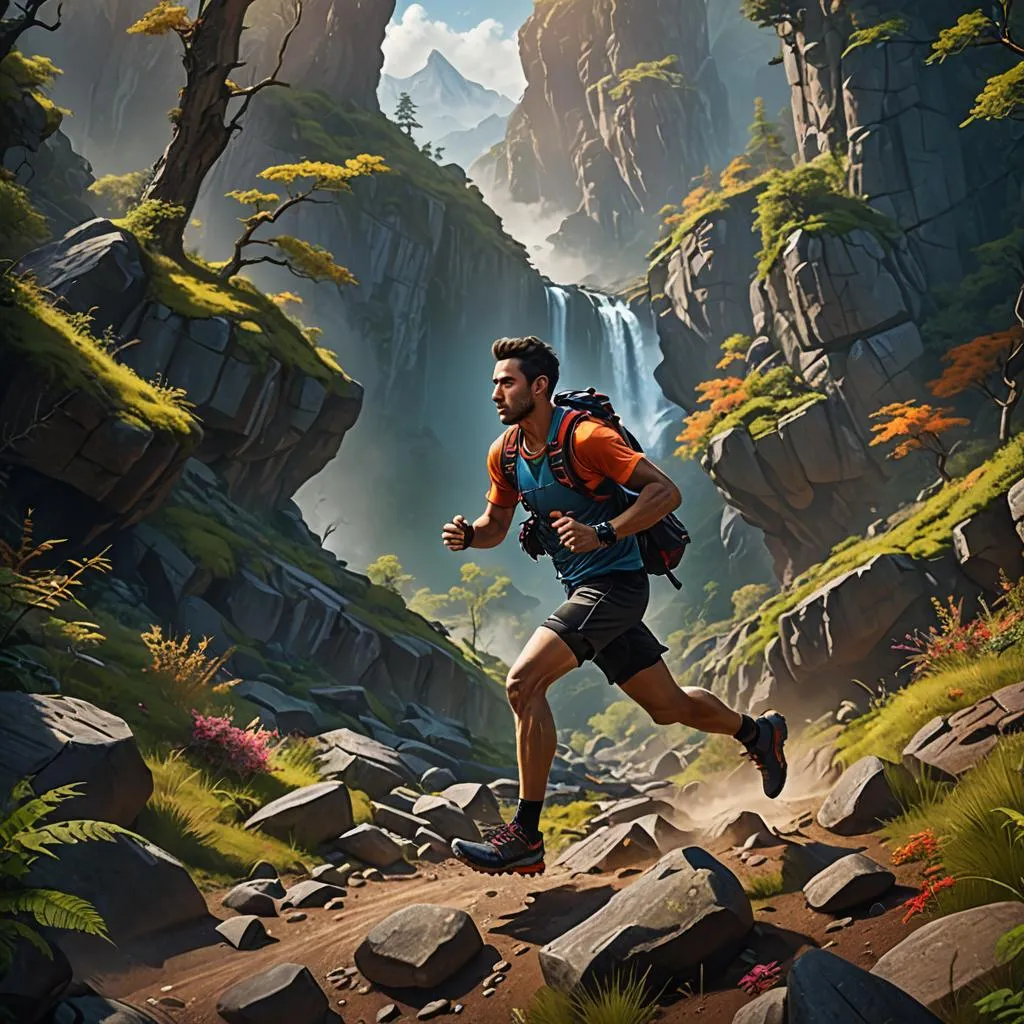Guide to High Top Trail Running Shoes: Boost Your Performance and Prevent Injuries
Posted on May 29, 2024 under running, Trail | No CommentTrail running is an exhilarating way to connect with nature while maintaining fitness. However, it comes with unique challenges, such as uneven terrains and potential injuries. High top trail running shoes are designed to address these challenges, providing enhanced support and protection. Let’s delve into the world of high top trail running shoes, exploring their benefits, features, and why they might be the perfect choice for your next trail adventure.
High Top Trail Running Shoes: An Overview
High top trail running shoes are a specialized type of footwear that extends above the ankle, offering greater support and stability compared to traditional running shoes. These shoes are specifically designed for trail running, incorporating features that help runners navigate rugged terrains safely and comfortably.
Why Choose High Top Trail Running Shoes?
Choosing high top trail running shoes can significantly enhance your trail running experience. Here are the key benefits:
- Ankle Support: The extended upper provides additional support, reducing the risk of ankle sprains and injuries.
- Stability: Enhanced stability helps in navigating uneven and rocky terrains.
- Protection: Offers protection against debris, mud, and water, keeping your feet safe and dry.
Anatomy of High Top Trail Running Shoes
Understanding the anatomy of high top trail running shoes helps in appreciating their functionality:
- Materials: Typically made from durable, breathable materials like mesh and synthetic fabrics.
- Construction: Reinforced stitching and protective overlays to withstand harsh conditions.
- Design Elements: Features like gusseted tongues to prevent debris ingress, and padded collars for added comfort.
How High Tops Prevent Ankle Injuries
Ankle injuries are common in trail running due to uneven surfaces. High tops help prevent these injuries through:
- Support Mechanisms: The higher collar provides lateral support, reducing the risk of rolling your ankle.
- Stability Features: Built-in stability technologies, such as firm midsoles and heel counters, keep your foot securely in place.
Additional Injury Prevention Benefits
Beyond ankle protection, high top trail running shoes offer several other injury prevention benefits:
- Knee Support: By maintaining proper foot alignment, they reduce stress on the knees.
- Reducing Fatigue: Enhanced cushioning absorbs impact, minimizing fatigue during long runs.
- Protecting from Elements: Shield your feet from rocks, roots, and adverse weather conditions.
Top Features to Look for in High Top Trail Running Shoes
When selecting high top trail running shoes, consider these essential features:
- Support: Look for shoes with excellent ankle and arch support.
- Cushioning: Adequate cushioning to absorb shocks and provide comfort.
- Traction: Aggressive outsoles for superior grip on various surfaces.
- Durability: Robust construction to withstand rough terrains and frequent use.
Comparing High Top to Low Top Trail Running Shoes
Both high top and low top trail running shoes have their advantages. Here’s a comparison:
- High Tops: Better for support and protection; ideal for technical trails.
- Low Tops: Lighter and more flexible; suitable for less challenging terrains.
Selecting the Right High Top Trail Running Shoes
Choosing the right pair involves considering:
- Terrain Type: Match the shoe features to the type of trails you run.
- Fit and Comfort: Ensure a snug fit with enough room for toe movement.
- Weight: Balance between support and weight for your running style.
Popular High Top Trail Running Shoe Brands
Several brands excel in producing high top trail running shoes. Some top choices include:
- Salomon: Known for their durability and advanced technology.
- Hoka One One: Offers excellent cushioning and comfort.
- La Sportiva: Excels in producing shoes for technical terrains.
How to Break in Your High Top Trail Running Shoes
Breaking in your high top trail running shoes is crucial for comfort:
- Gradual Use: Start with short runs and gradually increase distance.
- Proper Lacing: Ensure your shoes are laced correctly to avoid blisters.
- Socks Matter: Use quality trail running socks to enhance comfort.
Maintaining and Caring for Your High Tops
To extend the lifespan of your high top trail running shoes:
- Regular Cleaning: Remove dirt and debris after each run.
- Proper Storage: Store in a cool, dry place to prevent damage.
- Inspect Regularly: Check for wear and tear and replace when necessary.
High Top Trail Running Shoes for Different Terrains
Different terrains require specific shoe features:
- Rocky Terrains: Look for reinforced toe caps and aggressive tread patterns.
- Muddy Conditions: Waterproof materials and excellent drainage systems.
- Snowy Trails: Insulated designs and deep lugs for traction.
Frequently Asked Questions (FAQs)
Are high top trail running shoes heavier than low tops?
Yes, they are generally heavier due to additional materials for support and protection.
Can high top trail running shoes be used for hiking?
Absolutely, they offer great support and protection, making them suitable for hiking as well.
Do high top trail running shoes require special socks?
While not mandatory, using trail running socks can enhance comfort and reduce the risk of blisters.
How often should I replace my high top trail running shoes?
Typically, after 300-500 miles of use, depending on the terrain and usage frequency.
Are high tops better for trail running beginners?
Yes, they offer more support and protection, which can be beneficial for beginners learning to navigate trails.
Can I use high top trail running shoes in urban environments?
Yes, but they are specifically designed for trails and might be overkill for smooth pavements.
Conclusion
High top trail running shoes are an excellent investment for serious trail runners looking to enhance their performance and prevent injuries. With superior ankle support, stability features, and protection against the elements, they are well-suited for tackling challenging terrains. By choosing the right pair and maintaining them properly, you can enjoy a safer and more comfortable trail running experience.







